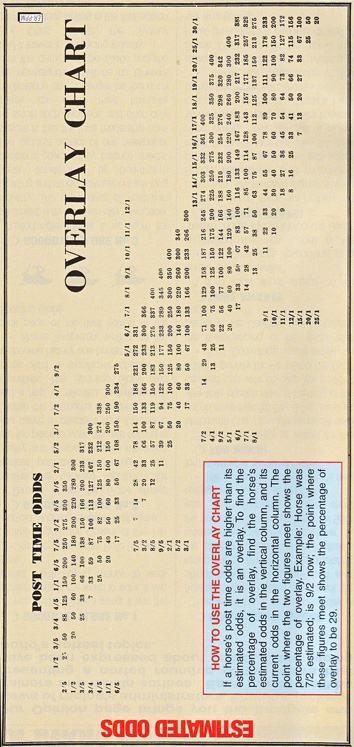One of America's legendary racing newsmen was 'Boots' Baker. He brought new ideas and revolutionary thinking to the US racing scene back in the '40s and '50s. The following are some of his ideas which Aussie and Kiwi punters can benefit from studying.
- Condition counts in any type of race. But the cheaper, lower-class horses do not hold peak form as long as better ones do. It is important to start the handicapping job by noting the date of each runner's most recent start. If the horse has been to the post within the last 12 days, it has all the percentages in its favour. All the statistics I have compiled over the years show that 12 days is about the limit time a lower-class horse can stay away from the races without upsetting its form cycle.
- I would make 15 or 16 days the absolute limit, though the layoff may be as long as a month if the horse is DROPPING SHARPLY in class off recent races.
- There's one thing to remember in connection with early speed. If there are two or more fast beginners in a race, there is apt to be trouble for both. If the horses and/or the jockeys both insist on setting the pace, they are prone to fade in the late stages, setting the race up for a late charger to come on and get the money.
- The early speedster's best chance to win comes when it is the only horse in the race that likes to run in front, enabling its jockey to rate it on top, saving something for the final drive.
- If you look for races where just ONE horse has early speed, is also in good form, and carries a familiar jockey, you have a bet.
- Where the horse finished in its last race or two is of less importance than the manner in which it ran and the company against which it competed.
- If the horse was plainly outclassed and went to the post at long odds, it was EXPECTED by the public to finish well back. If it did just that, it cannot be said to have run a bad race. It didn't figure to do any better.
- But, to be given the benefit of the doubt in this matter, it would now have to be entered in a class that it had successfully competed against before.
- Look for excuses for horses that are defeated when the public bet them to do well. If the horse ran far back from the winner last time out with no apparent excuse bad luck, poor ride, outclassed, etc. - you certainly are justified in suspecting that it might be off form.
- If both its last 2 races were poor ones without a reasonable alibi for either, all you can do is assume the horse is no longer at its best and eliminate it from consideration.
- It isn't wise to use weight comparison, weight on or weight off, as a factor in handicapping. In horse-against-horse comparison where a weight shift enters the picture, unless the shift is substantial – at least 2 or 3 kilos my personal opinion is that there is little significance attached.
Weight shifts are only an effort by the handicapper to bring an inferior horse up to the level of the recent winner. Unless the winner is severely penalised, the weight shift isn't likely to make that much difference in the relative positions of the horses the next time they meet, all other things being equal.
- In a nutshell, what I am trying to say is that weight is not the potent factor that so many bettors attach to it. I'd say the player should concentrate more on other important factors, for rarely will weight cheat him out of a winner if the horse figures to win on other key factors.
- What is consistency? Generally speaking, it's the ability to compile a steady record of in-the-money finishes over a period of time. At least 20 races must be considered. If it can finish in the money at least 40 per cent of the time it can be considered to be at the bottom end of consistency. It gets more consistent the higher its strike rate for placings.
- With 2yo's, look for a horse that is well bred, or which has worked very well or is owned and trained by a successful outfit, or is priced at less than 4/1 in the early betting even though it has never been to the post.
- Weight means little in 2yo races. The distances are short and they all carry much the same weight.
- Form holds up extremely well in 2yo races, which means the winner is usually a horse that was right up there in most of its races to date.
OVERLAY CHART
HOW TO USE THE OVERLAY CHART
If a horse's post time odds are higher than its estimated odds, it is an overlay. To find the percentage of overlay, find the horse's estimated odds in the vertical column, and its current odds in the horizontal column. The point where the two figures meet shows the percentage of overlay. Example: Horse was 7/2 estimated; is 9/2 now; the point where these figures meet shows the percentage of overlay to be 29.

By Martin Dowling
PRACTICAL PUNTING - OCTOBER 1996